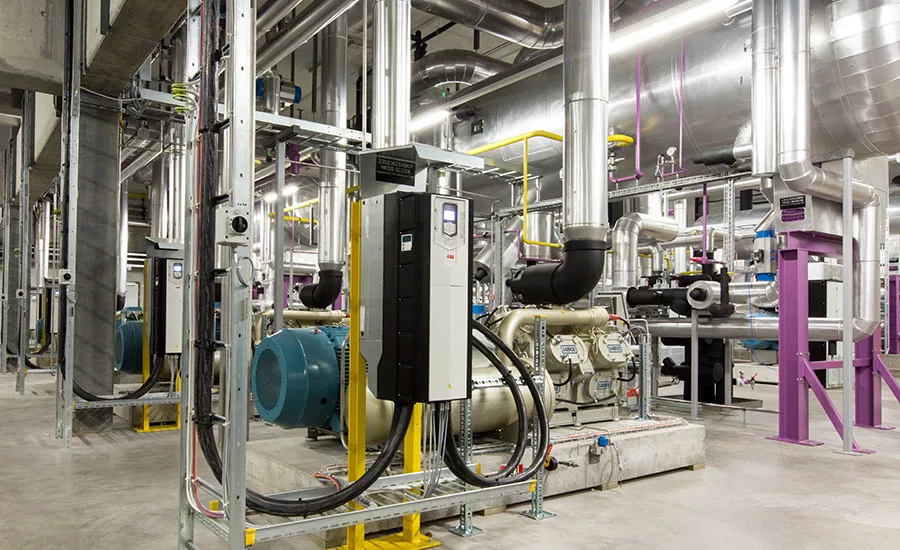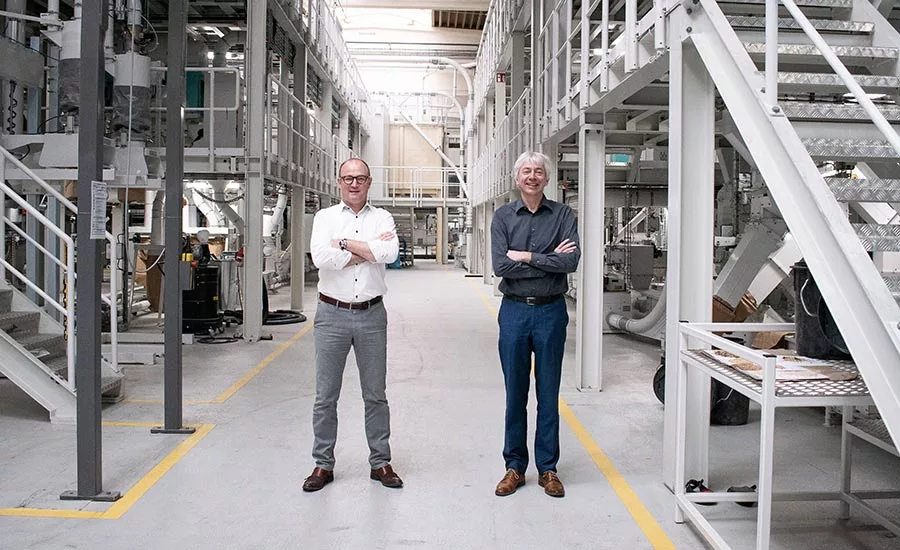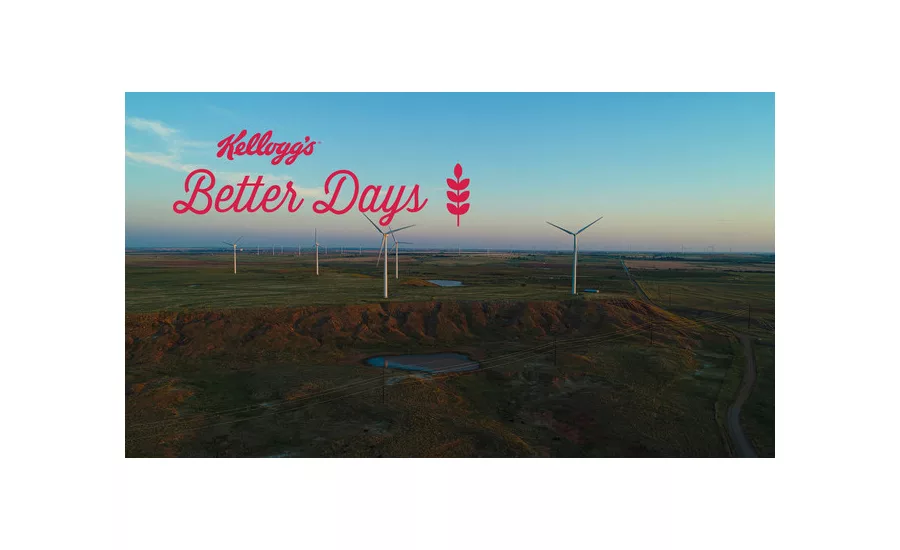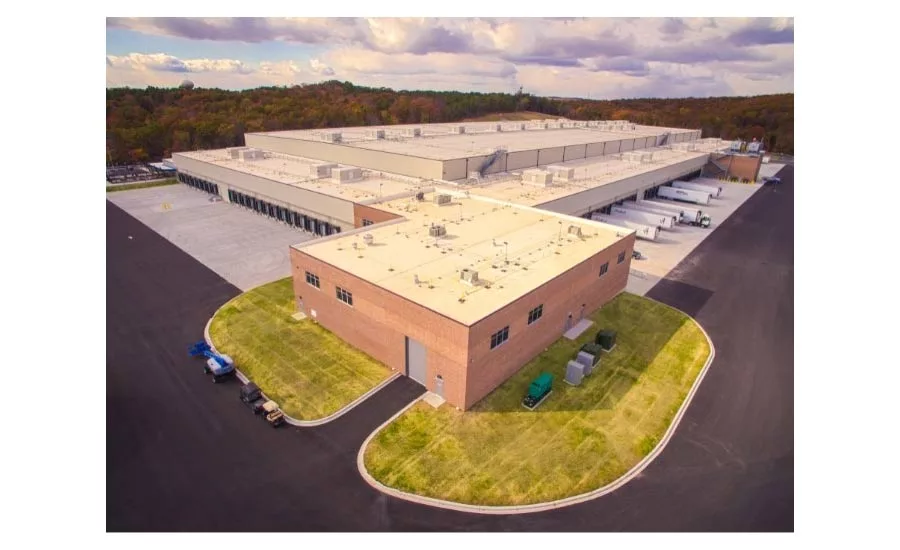Sustainability
Sustainability has its rewards—tangible and intangible
Suppliers and food processors work together to create projects that save energy and money—and show they’re responsible corporate citizens

Utilizing high efficiency motor and drive technology saves energy in refrigeration systems typically found deep in the center of food and beverage facilities. Source ABB

Peter Vyncke, owner of Vyncke, and Johannes Wick, CEO of Bühler Grains & Food, in Bühler’s Application Center in Beilngries, Germany. Source: Bühler Group

Kellogg Company expects to achieve 50% renewable electricity globally by the end of 2022. Source: Kellogg

Smithfield Foods’ new distribution center in Maryland opened in the fall of 2019 and was awarded the LEED Silver certification by the U.S. Green Building Council. The facility has a 420,000-sq.-ft. footprint and uses 50% less ammonia than comparable buildings and chilling systems. Source: Smithfield Foods
There are several methods to reduce energy needs, usage and costs. Some are basic and simple; others are more sublime. Four recent news items show how processors can take steps to decrease energy inputs, improve their carbon footprint and look smarter and be more sustainable.
Adopting high-efficiency motors/drives can reduce global electrical consumption by 10%
In a recently released whitepaper from ABB, there is still worldwide a potential for significant energy improvements in industry and infrastructure, simply by specifying high-efficiency motors and variable speed drives for new projects and changing out old, less efficient motors and drives in aging systems in industrial and commercial buildings.
In the U.S., at least in any new plants that I’ve visited, high-efficiency motors and variable speed drives (VSDs) are the norm, and probably would no longer be considered “low hanging fruit” to save energy. The same will be true for most retrofits and renovations, and in the case of older plants, older motors are often replaced with newer, more efficient motors/drives when they die. So you might ask, then, where is the problem?
According to the International Energy Agency (IEA), industry accounts for 37% of global energy use and some 30% of global energy is consumed in buildings. A significant number of industrial electric motor-driven systems in operation today—in the range of 300 million globally—are inefficient or consume much more power than required, resulting in monumental energy waste. Independent research estimates that if these systems were replaced with optimized, high-efficiency equipment, the gains to be realized could reduce global electricity consumption by up to 10%.
“Industrial energy efficiency, more than any other challenge, has the single greatest capacity for combating the climate emergency. It is essentially the world’s invisible climate solution,” says Morten Wierod, president ABB Motion.
“The importance of transitioning industries and infrastructure to these highly energy efficient drives and motors to play their part in a more sustainable society cannot be overstated,” says Wierod. “With 45% of the world’s electricity used to power electric motors in buildings and industrial applications, investment in upgrading them will yield outsized rewards in terms of efficiency.”
For more information, download the white paper, “Achieving the Paris Agreement: The vital role of high-efficiency motors and drives in reducing energy consumption,” which can be found on ABB’s website.
Turning biomass from food/beverage processes into a carbon-neutral fuel
Bühler Group and Vyncke have formed a strategic partnership to offer integrated solutions with which biomass side streams from a process can be transformed into clean process energy while reducing a manufacturer’s carbon footprint.
Blegian technology supplier Vyncke designs and builds industrial energy plants that convert biomass waste and sorted industrial waste into green and clean energy—namely thermal energy (steam, hot water, thermal oil, hot gas from 1 to 100 MWth) or electrical power (0.5 to 15 MWe), or any combination of these energy media.
One important joint project will be the expansion of a malt production plant for Bühler’s long-time business partner, Malteria Oriental S.A. in Montevideo, Uruguay. Malteria Oriental S.A. belongs to the Grupo Petrópolis, one of Brazil’s largest beer producers. Its brewing business requires more malt, as beer consumption in South America has grown steadily in recent years.
In malt houses, the thermal energy consumption for drying malt is enormous. In the project, Vyncke will be responsible for recovering thermal energy from biomass, which is a by-product of malt production. Through an on-site energy audit, Vyncke developed a set-up to reduce the size of the energy system by 30%, creating savings in the total investment as well as the operational costs. Vyncke will build a turn-key 20-megawatt superheated water boiler with dual combustion systems which will burn internal barley husks and plant rejects, completed by externally sourced wood chips. This will save 35,000 tons of CO2 emissions each year compared to standard operational practices in Uruguay.
The new malt house is designed for a batch size of 260 tons of barley and has an annual capacity of 77,000 tons of malt. Commissioning and production are scheduled for March 2022.
Why biomass?
Biomass by-products are generated in almost all food processes. Typical examples are the processing of grains, rice, corn, and cocoa. Today, by-products are often either used for animal feed or simply disposed of. From biomass by-products, food manufacturers can also produce a climate-neutral form of energy.
Unlike the combustion of fossil fuels, the use of biomass energy helps controlling greenhouse gas emissions as the only fraction released corresponds to what the plants previously took from the atmosphere during their growth, which is less than transporting the side stream products to a place where they would be used for feed or disposal. This creates a neutral CO2 cycle.
Kellogg expects to achieve 50% renewable electricity globally before 2023
Kellogg has announced that it will achieve over 50% renewable energy to address the electricity needs of its owned manufacturing sites globally by the end of 2022. The company signed a long-term wind energy virtual power purchase agreement (VPPA) in North America with Enel Green Power for approximately 360 gigawatt hours (GWh) of wind electricity annually, which is equal to 50% of the volume of electricity used across Kellogg’s North American manufacturing facilities.
The VPPA advances Kellogg towards its global Better Days commitments to reduce Scope 1 & 2 greenhouse gas emissions by 65% and to achieve 100% renewable electricity by 2050. “Kellogg has been working to reduce its carbon footprint across our value chain for more than a decade,” says Amy Senter, chief sustainability officer, Kellogg Company. “Our latest VPPA further demonstrates to investors, stakeholders and our consumers that we are taking action to address climate change.”
With the support of Kellogg’s VPPA, Enel has started construction of Azure Sky wind in north central Texas, its first wind + storage project globally, which combines a 350 MW wind facility paired with approximately 120 MW of battery storage, one of the largest battery storage facilities in the world. The Azure Sky wind farm will add clean energy resources to the community’s local grid and is expected to be operational in 2022.
Kellogg’s portion of renewable electricity generated by the wind farm is estimated to avoid 250,000 metric tons of CO2 emissions each year, equivalent to the carbon reduction of removing approximately 55,000 passenger vehicles off of the road annually. Kellogg was advised on the VPPA agreement by Schneider Electric Energy & Sustainability Services, who assisted the company in its project selection and negotiations.
For more information on Kellogg’s sustainability projects, visit the company’s Corporate Sustainability Report.
New distribution center uses 50% less ammonia
While some food plants have earned LEED (Leadership in Energy and Environmental Design) certification, distribution centers are not top of mind for such a certification. The Silver certification from the U.S. Green Building Council was awarded to Smithfield Foods' new Maryland distribution center. The facility began operations in the fall of 2019.
The $90 million, 420,000-square-foot facility features more than 47,000 pallet positions and the latest industry technology, including efficient refrigeration systems that reduce energy use by more than 19% and uses 50% less ammonia compared to similar facilities and chilling systems.
The location of the newest distribution center in Smithfield’s footprint gives the company the ability to serve its customers in the Northeast and Mid-Atlantic regions by providing access to one-third of the U.S. population within an overnight drive, reducing greenhouse gas (GHG) emissions, transportation mileage and fuel costs while improving delivery times. These operational efficiencies also contribute to Smithfield’s carbon reduction goals to reduce GHG emissions across the company’s entire U.S. supply chain 25% by 2025 and to become carbon negative in all U.S. company-owned operations by 2030.
“Achieving LEED certification at our North East distribution center is an important milestone in our efforts to continually optimize our supply chain operations to meet our sustainability goals,” says Scott Saunders, chief supply chain officer. “This distinction recognizes energy-efficient operational features that are relatively uncommon in the food and cold storage space and are a testament to Smithfield’s leadership by example in sustainable, responsible food production.”
Additional green features of the facility include optimized and low-flow water fixtures to reduce unnecessary water use; zero-water landscaping that eliminates the need for sprinklers; LED lighting with occupancy sensors; electric car charging stations; and ongoing green cleaning and pest control practices, among others.
Looking for a reprint of this article?
From high-res PDFs to custom plaques, order your copy today!







